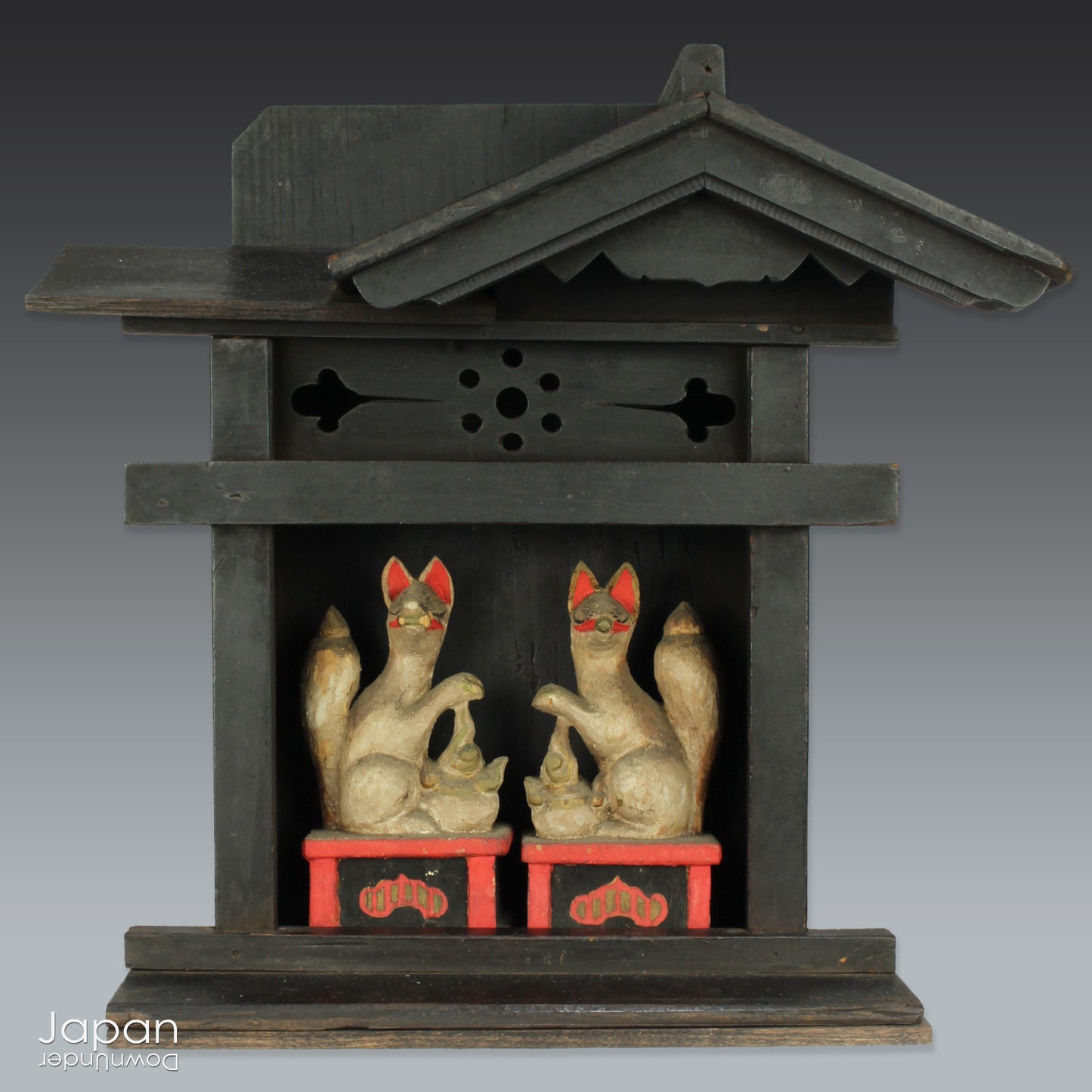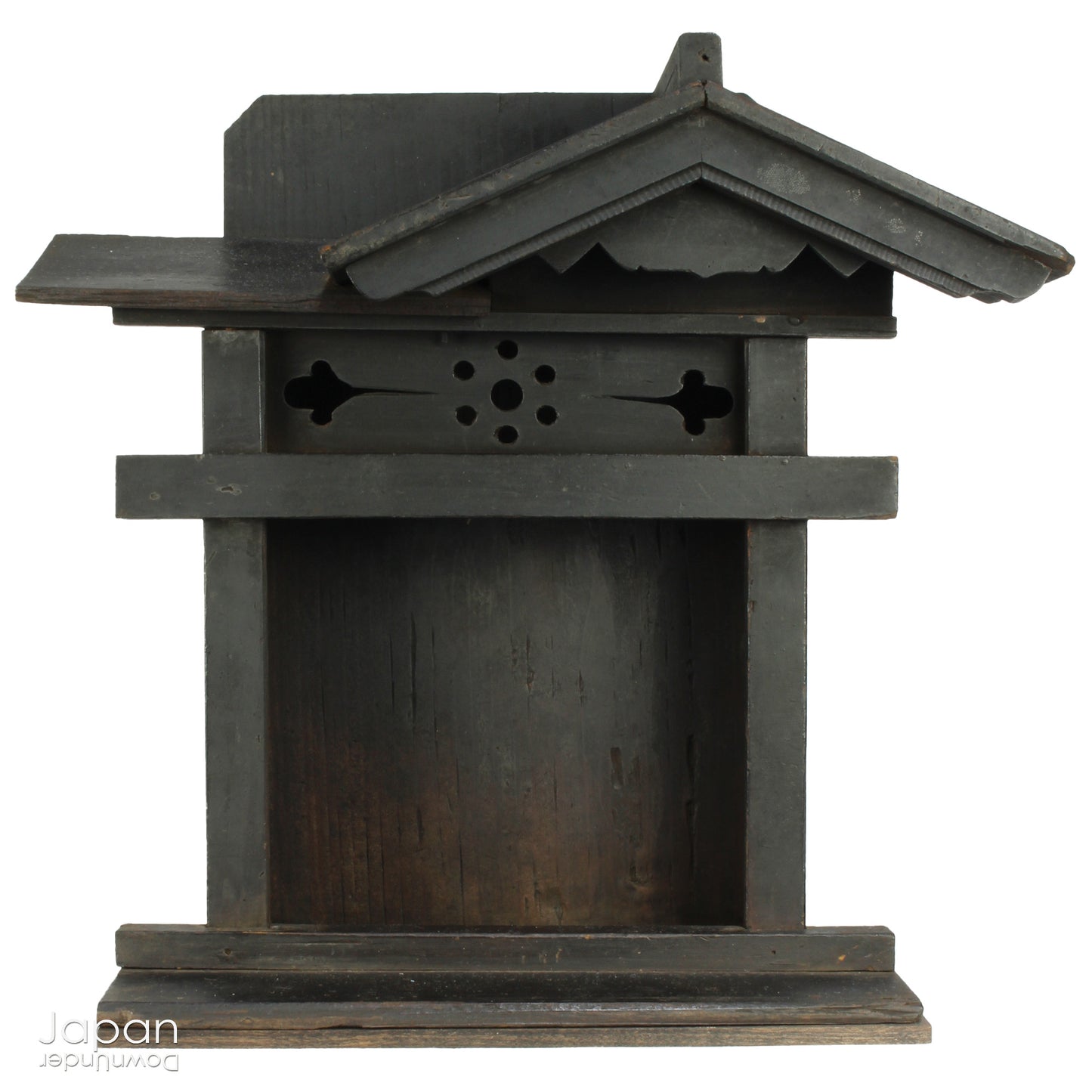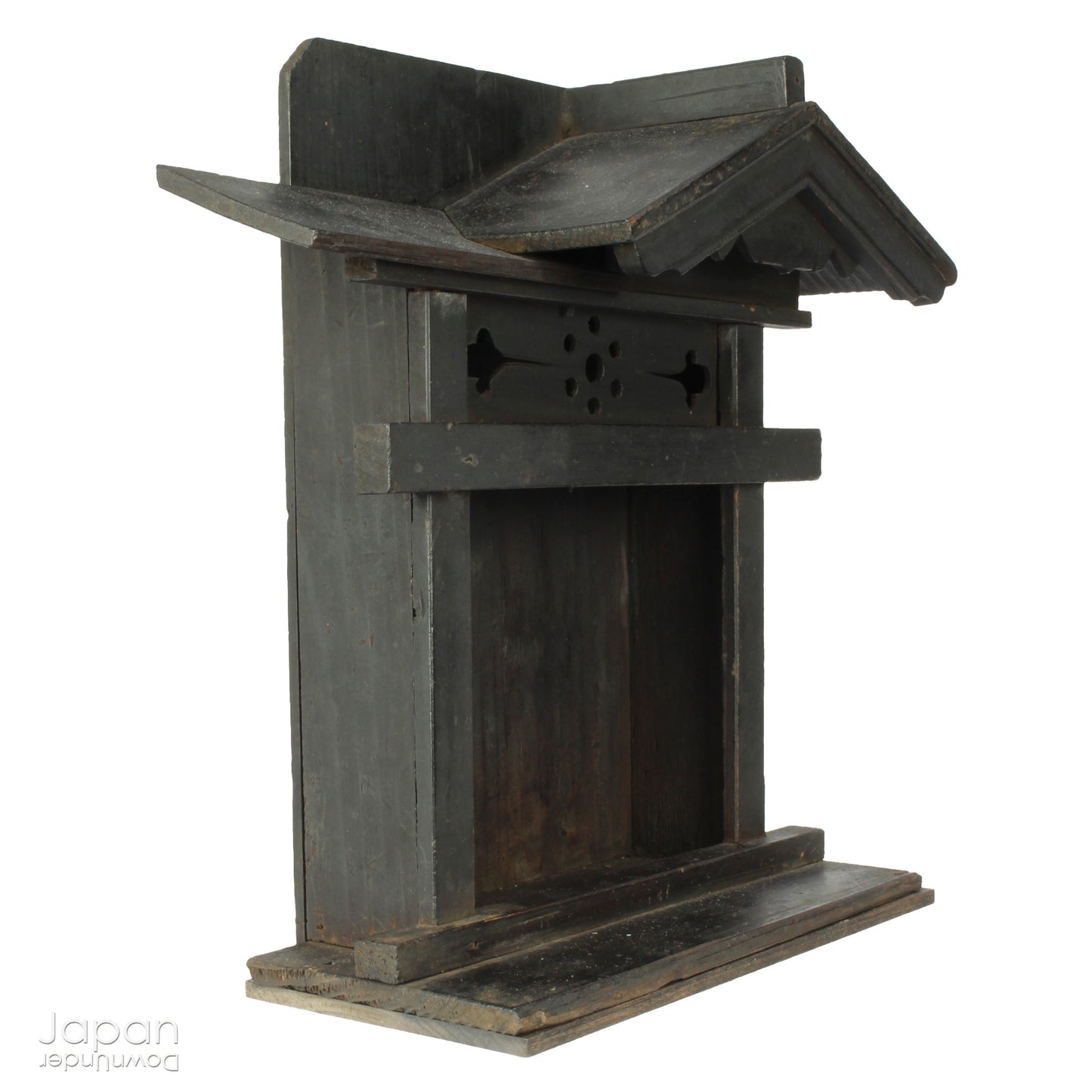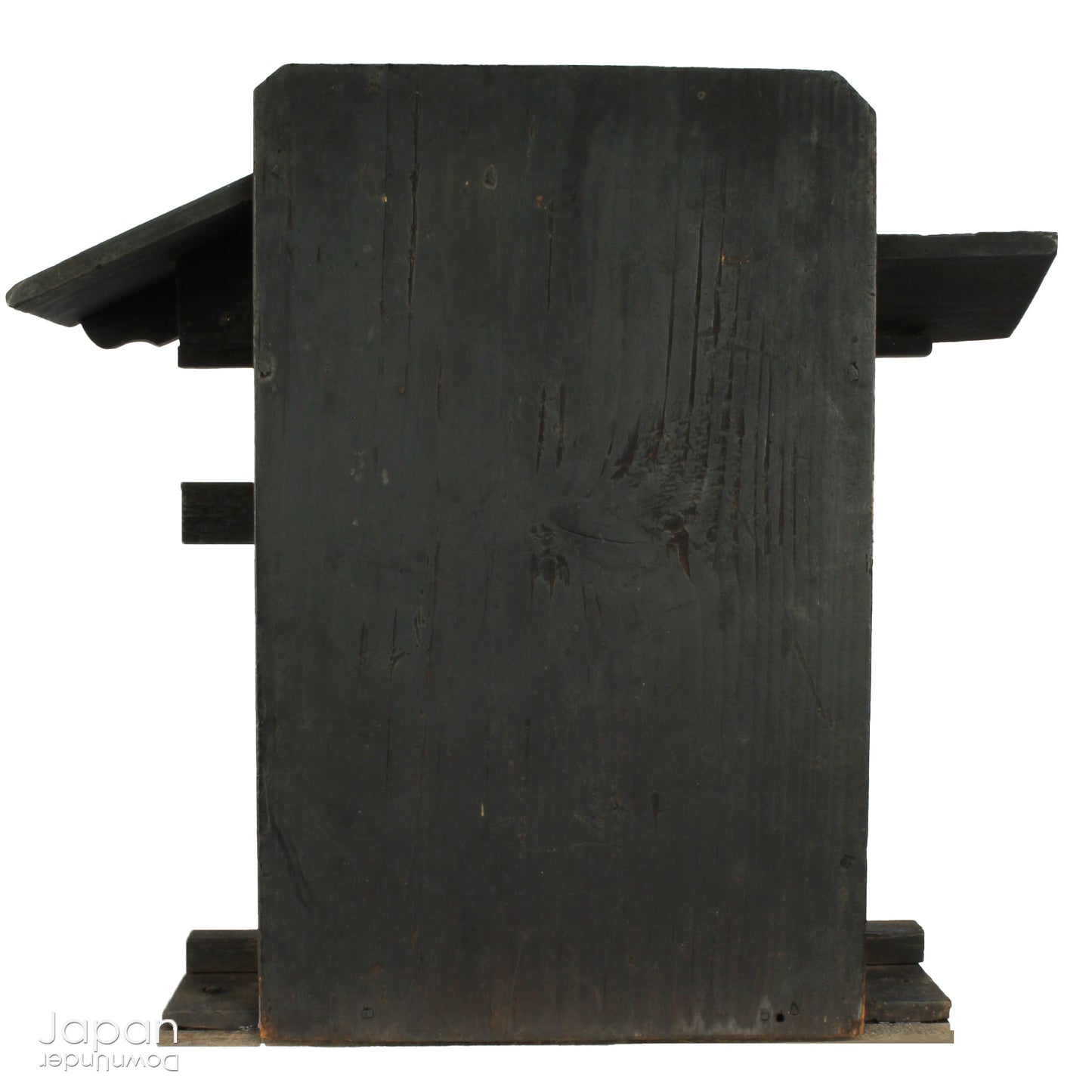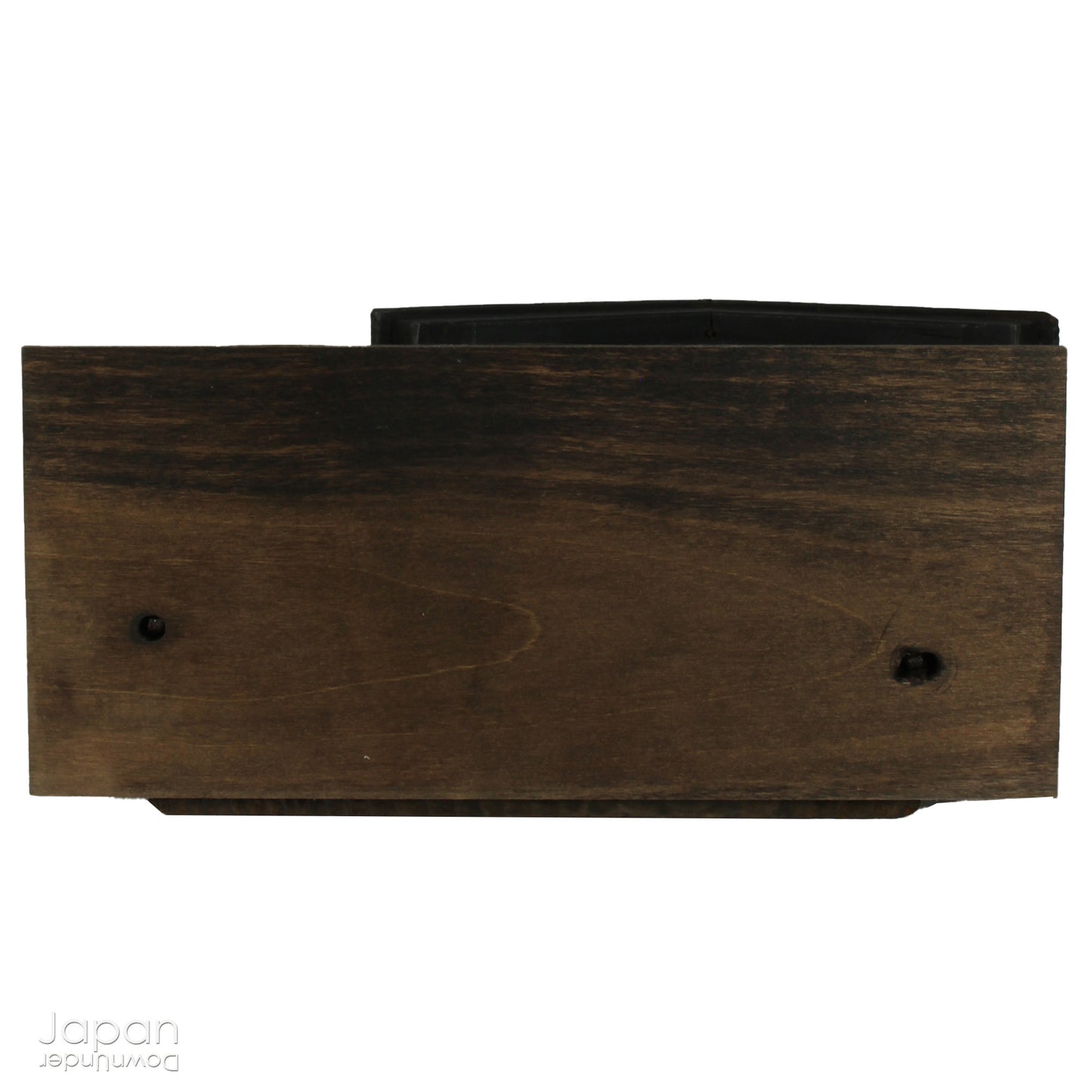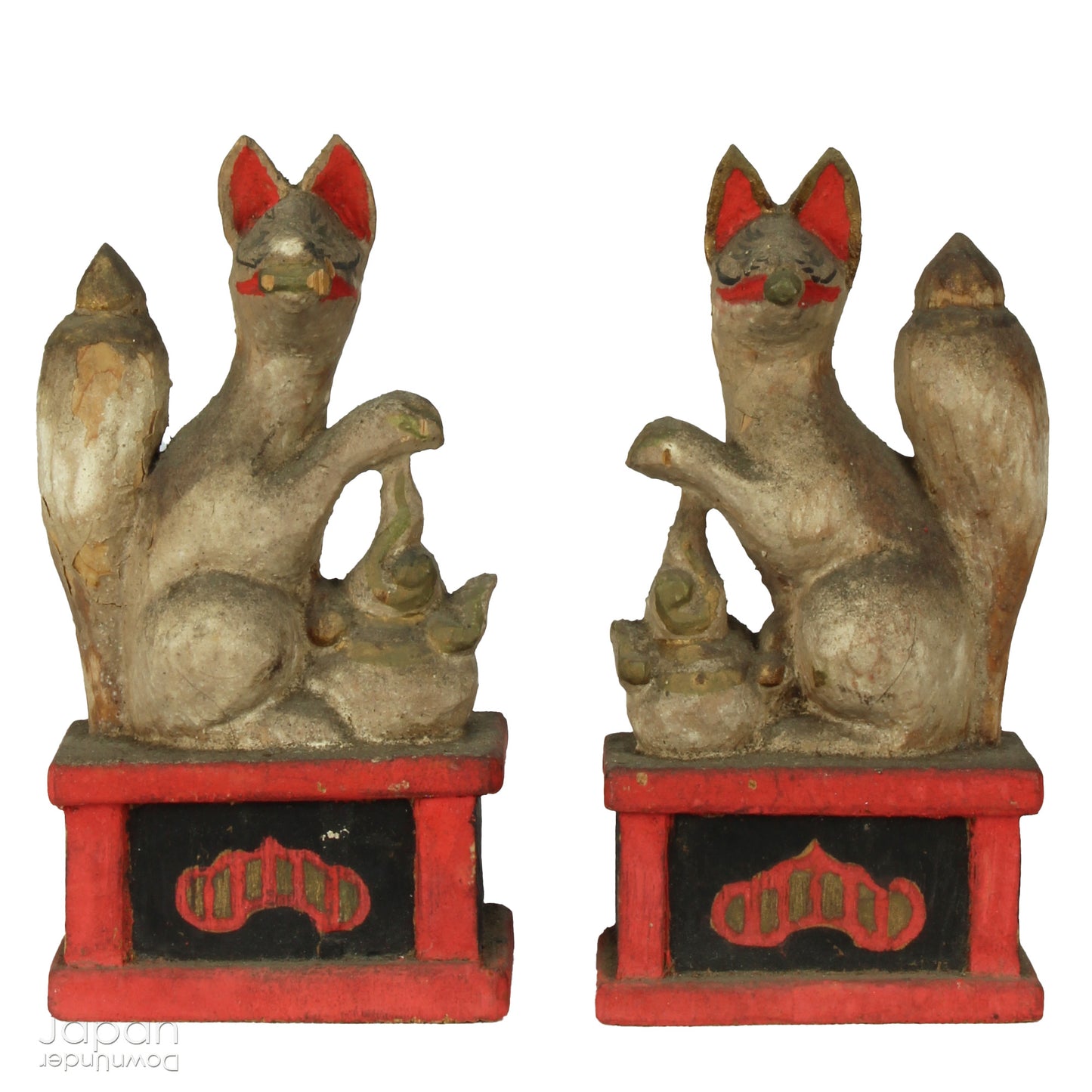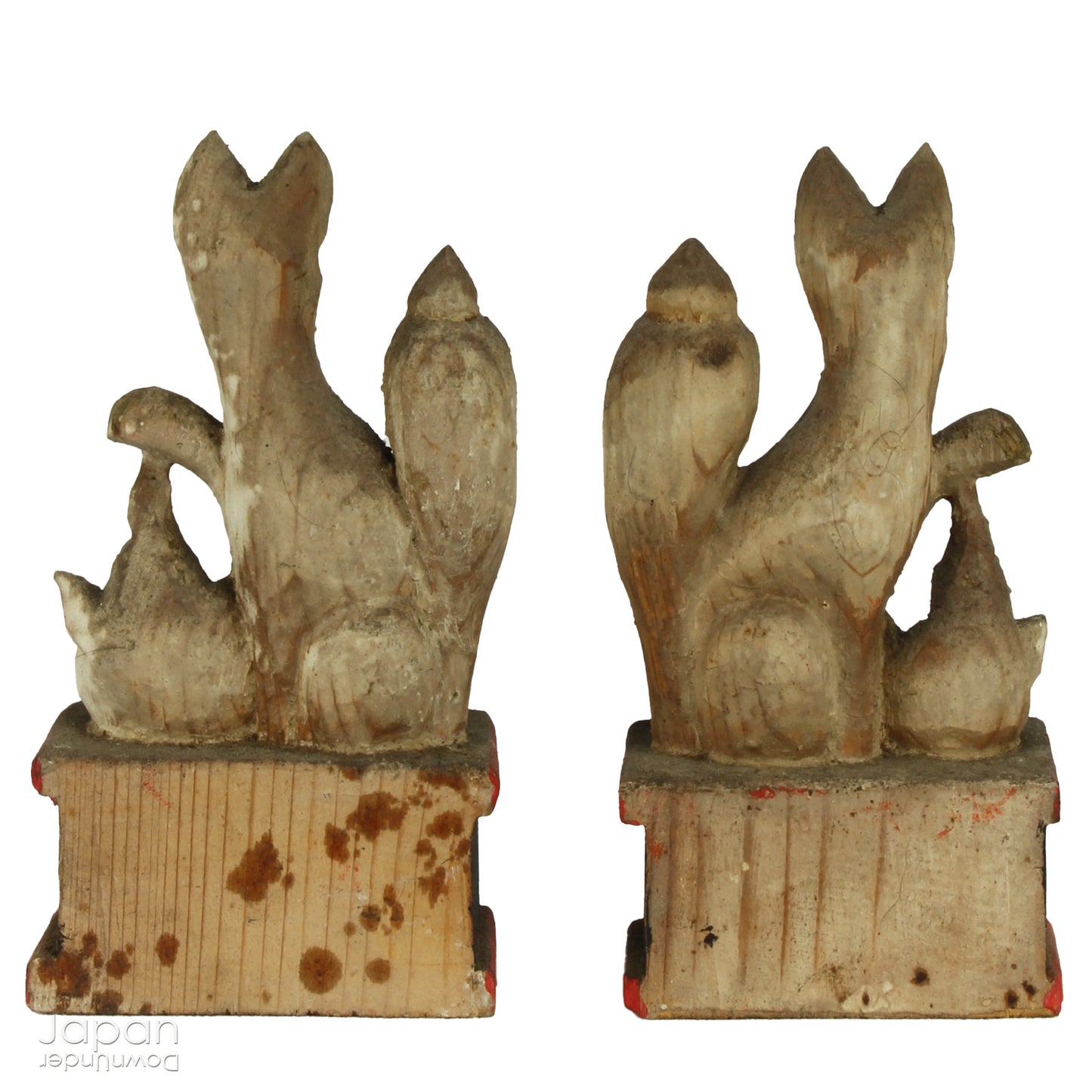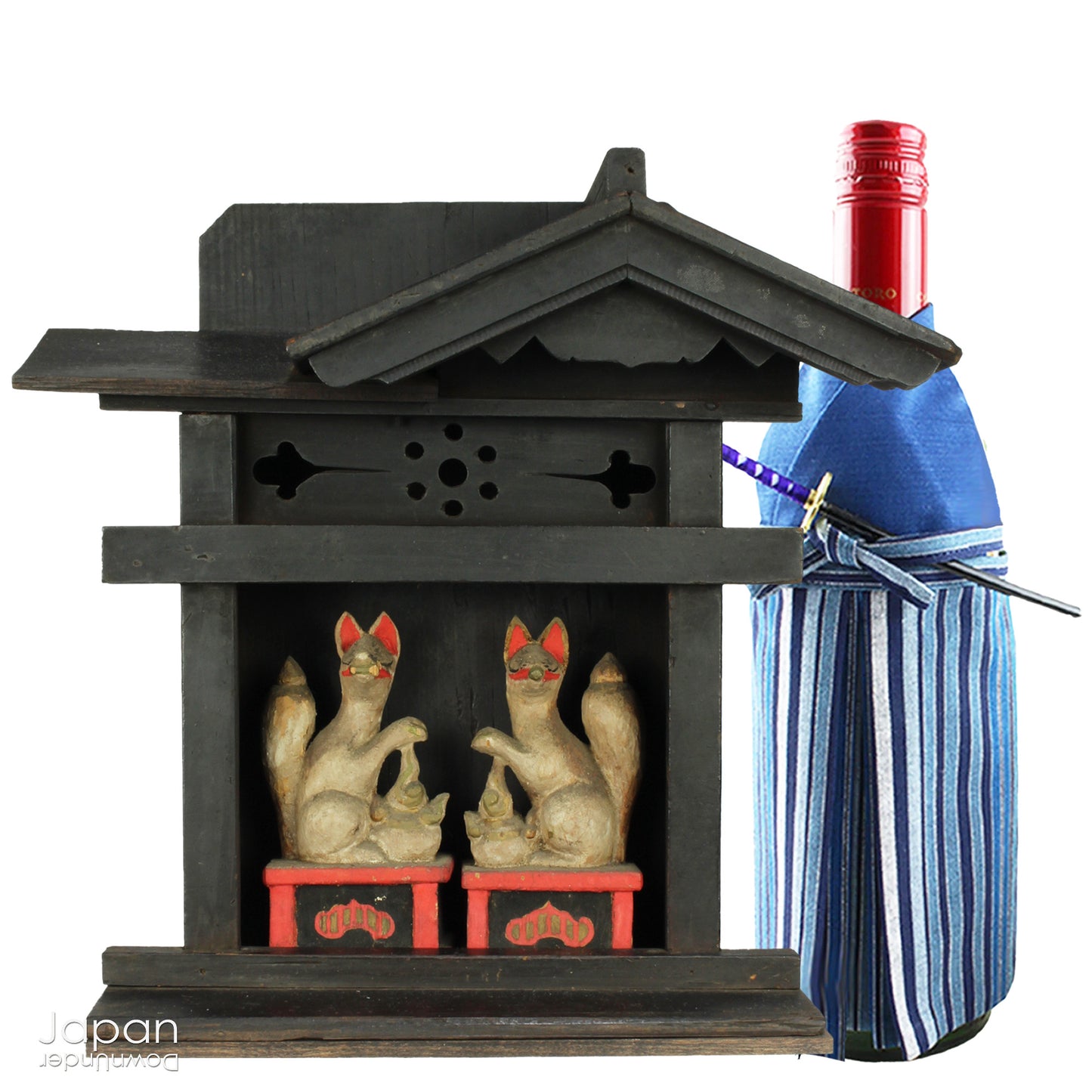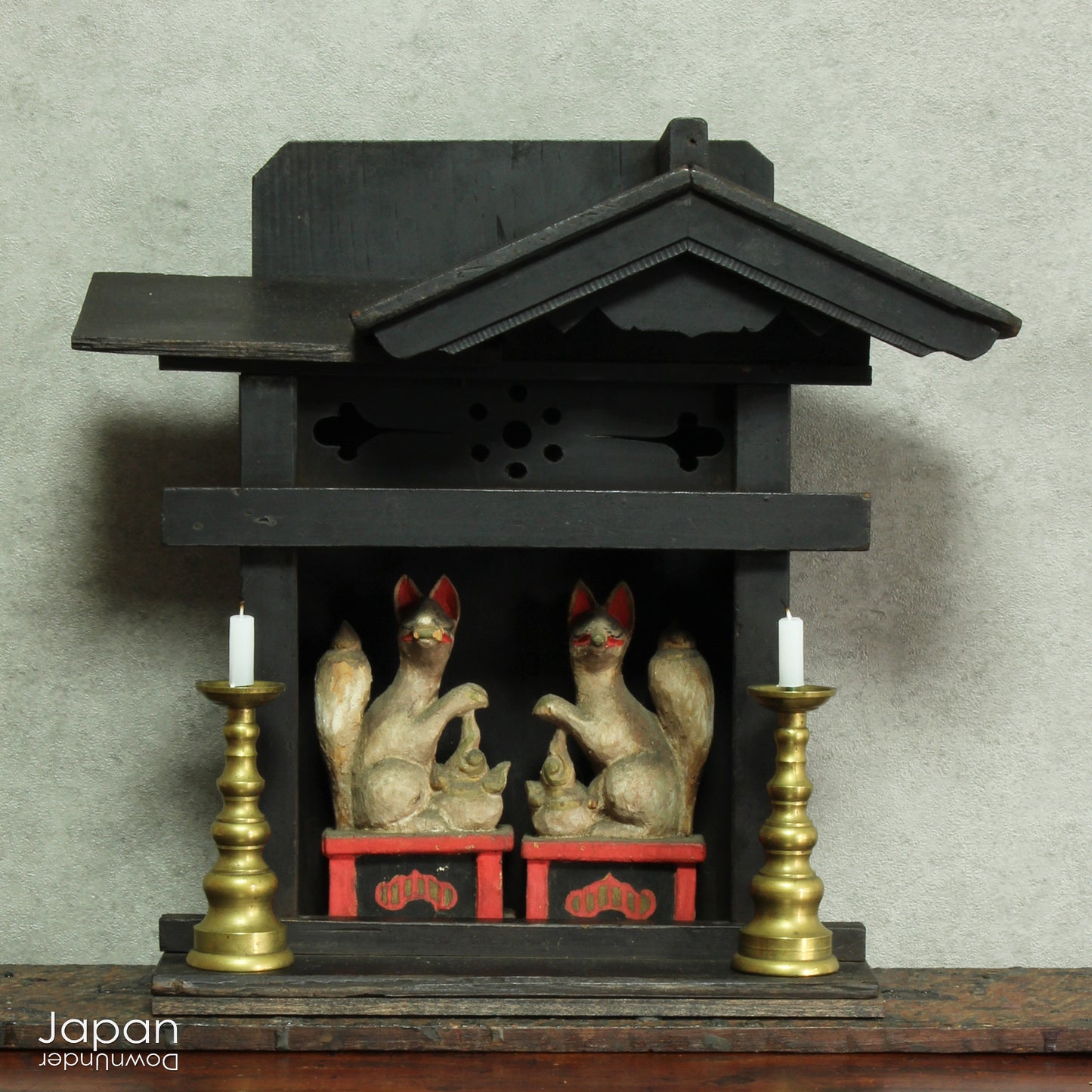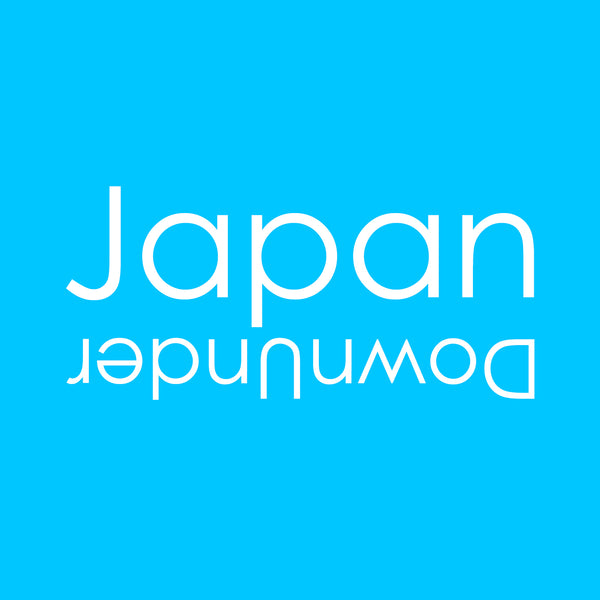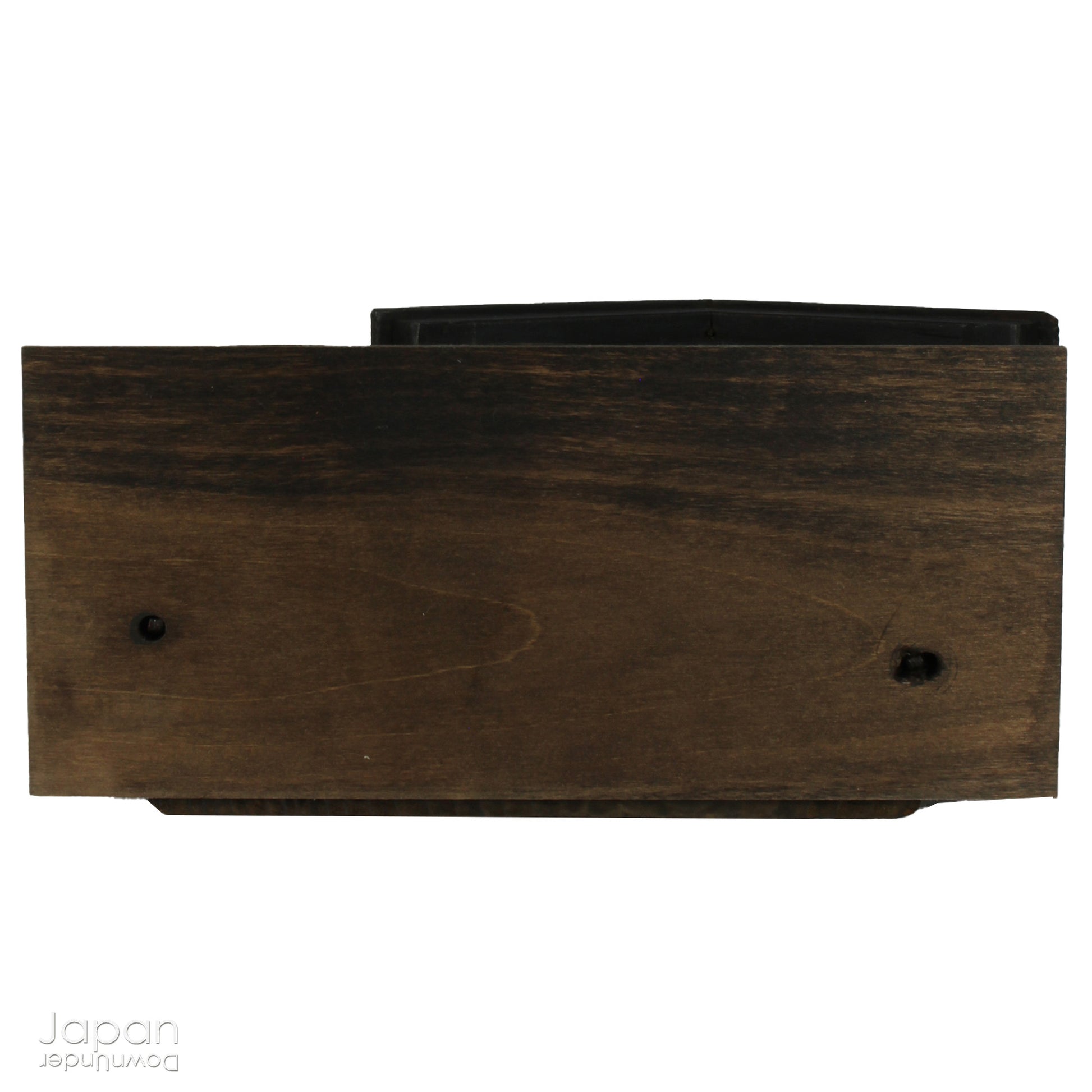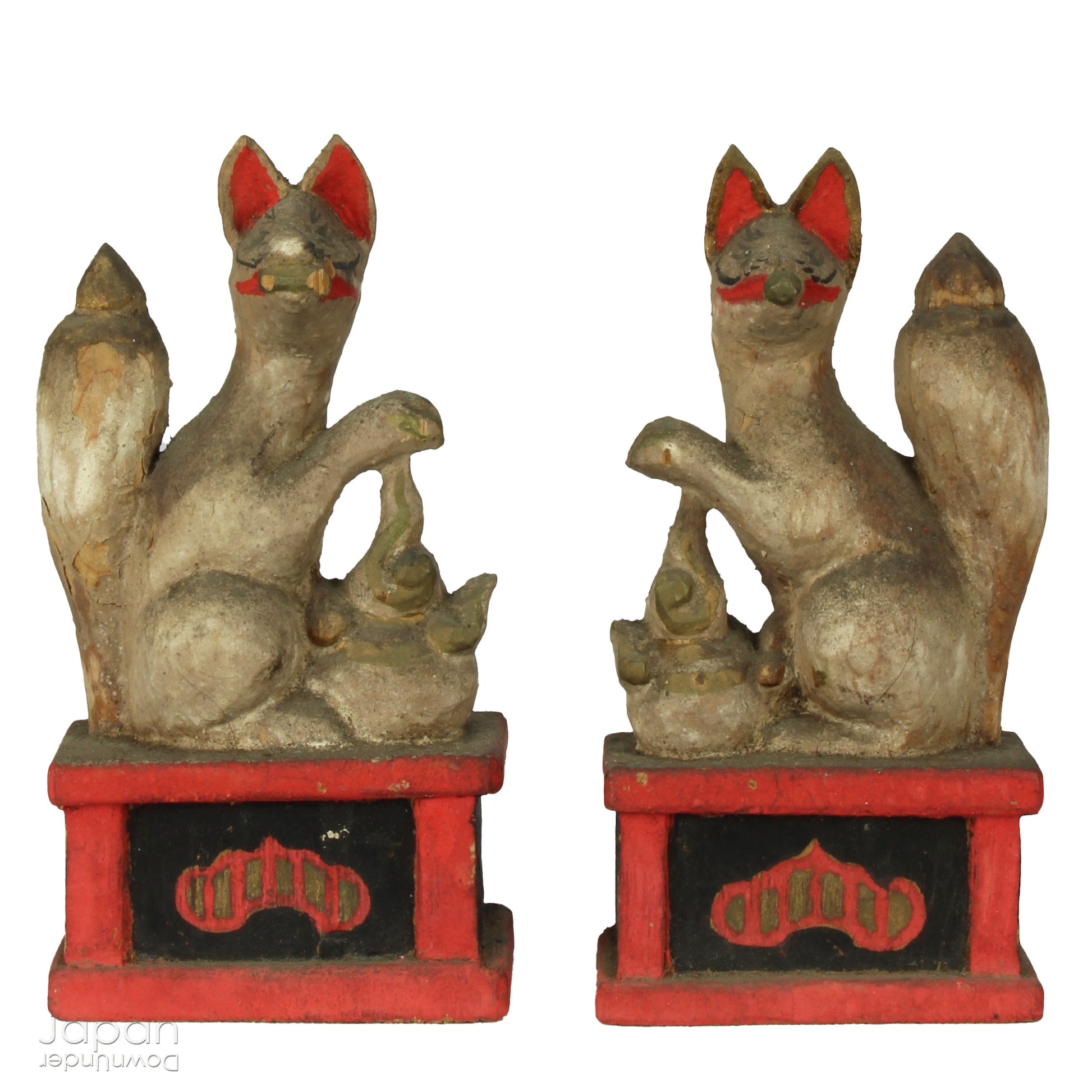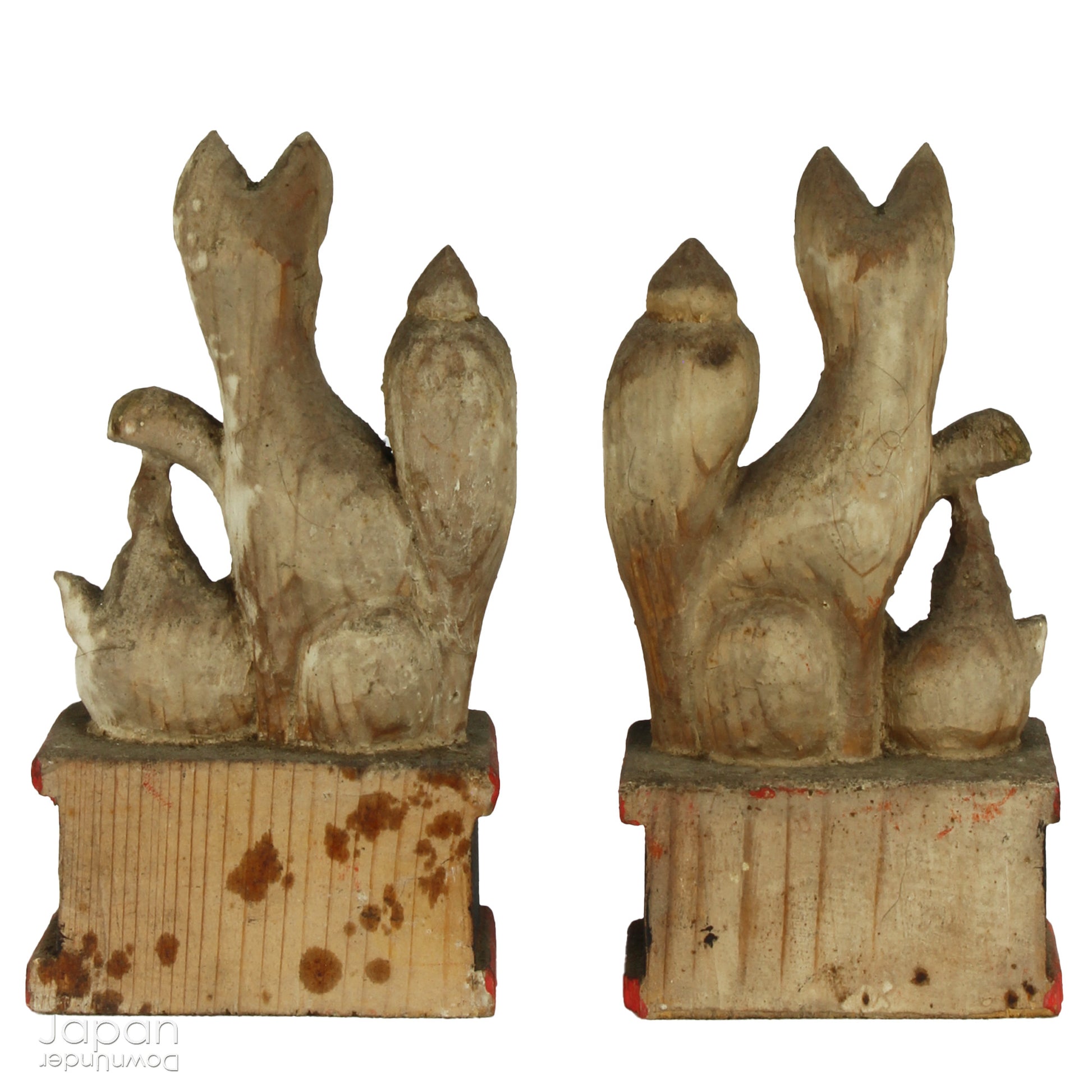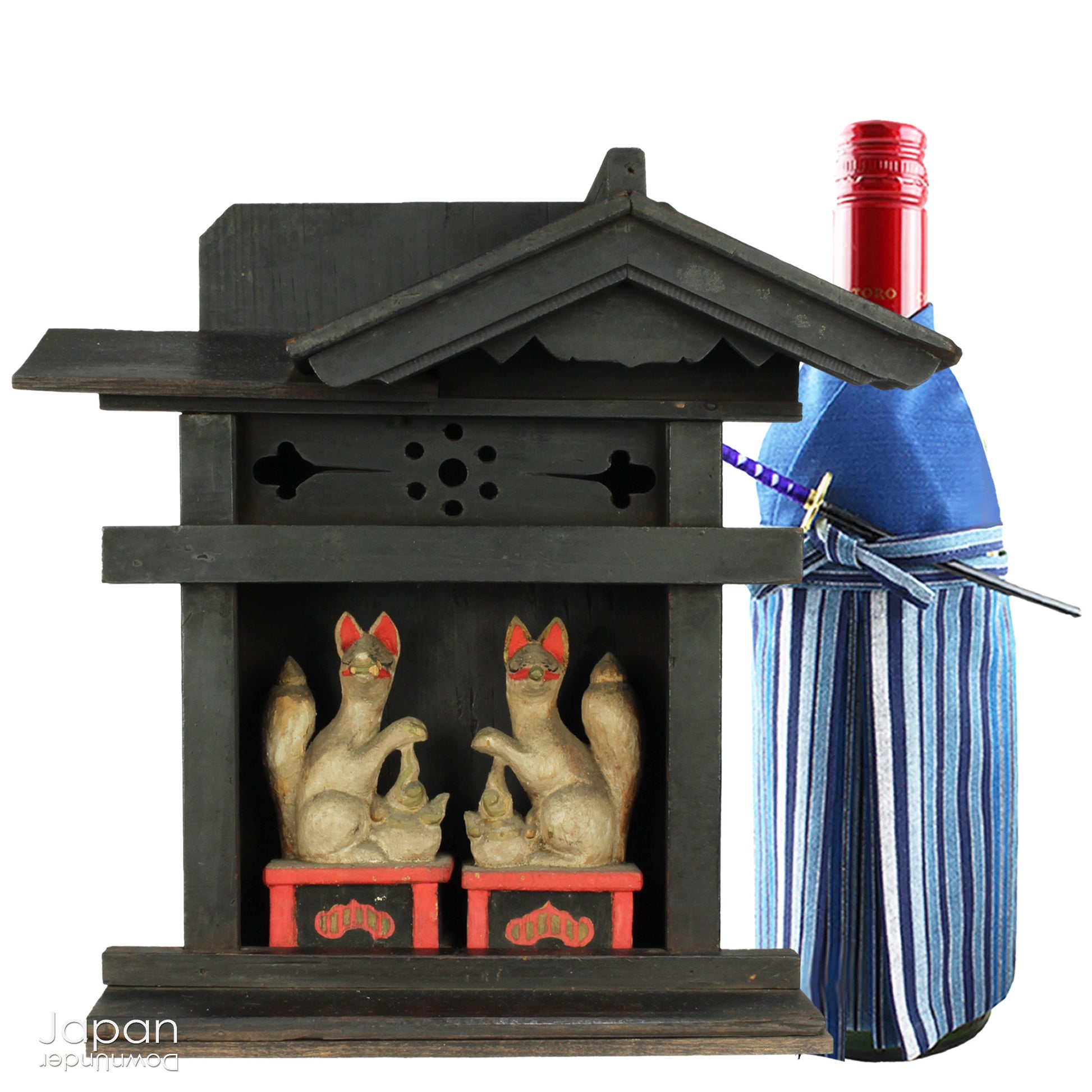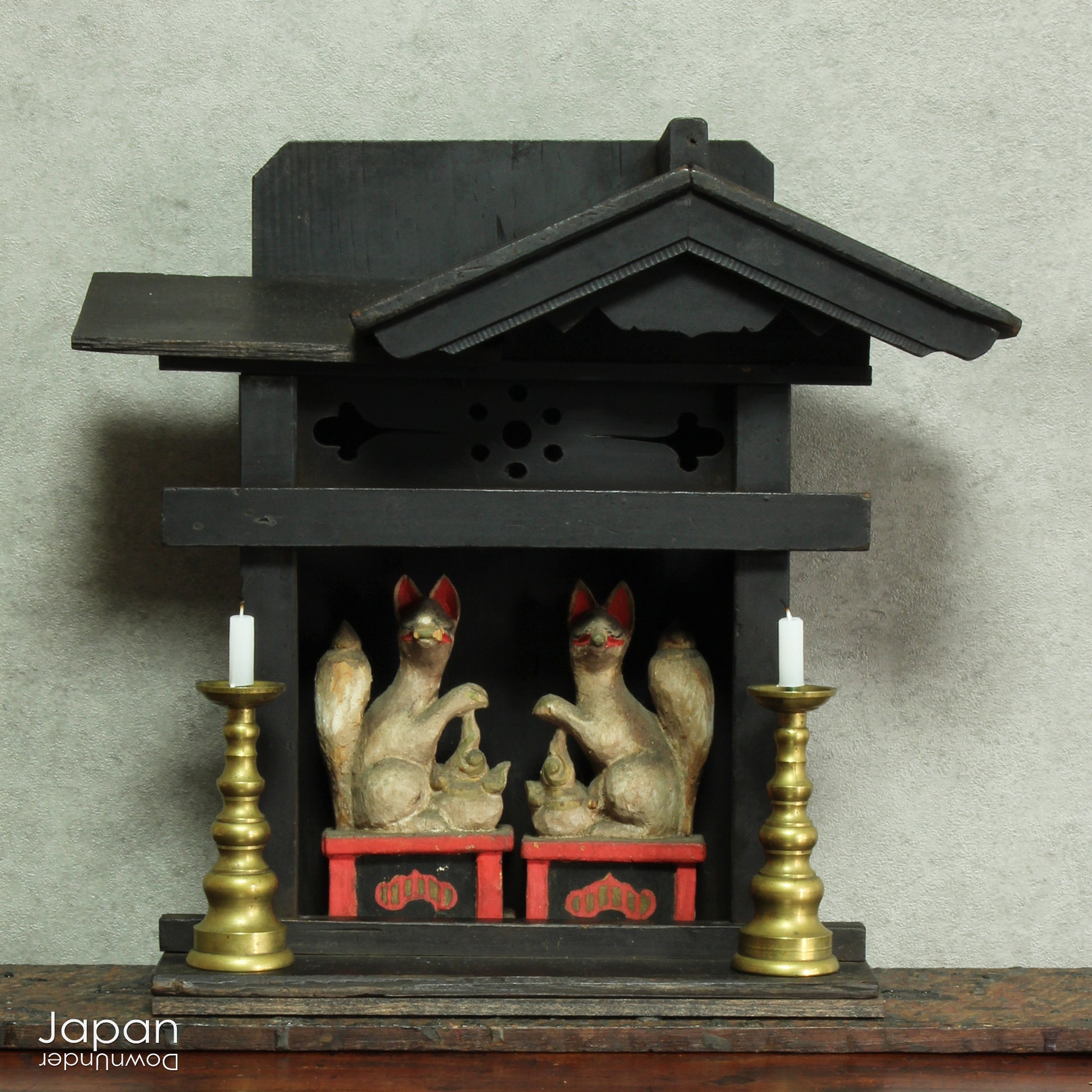JapanDownUnder
japanese antique kamidana shinto shrine with inari fox - spiritual folk art
japanese antique kamidana shinto shrine with inari fox - spiritual folk art
Couldn't load pickup availability
Love Japanese Style Like We Do
This charming Edo-period Shinto shrine is a rare and beautiful find - an authentic piece once cherished in a traditional Japanese country home. It originally held pride of place on the kamidana (god shelf), serving as a sacred site for daily offerings and prayers. Nestled within are a pair of hand-carved Inari foxes - protective spirits known to bring fortune, fertility, and blessings. Embodying the essence of Shinto folk belief, it invites serenity and cultural richness into any space, whether you're a collector, spiritual practitioner, or admirer of Japanese heritage.
At the heart of every kamidana was a kamifuda - a paper talisman representing a kami (deity) from one of Japan’s national Shinto shrines. In rural homes, particularly those of farmers, fishermen, merchants, and artisans, other lucky deities (engimono), like ebisu and Daikoku and Inari foxes, were often enshrined alongside. Many homes even maintained two separate shelves: the kamidana for regular worship and the engidana for lucky gods. Daily rituals included lighting candles and making offerings for health, happiness, and prosperity.
This particular shrine houses two delightful Inari foxes, traditional omamori (charms) purchased from Inari shrines during pilgrimages. Worshippers would bring them home or leave them at the shrine, seeking divine protection. Inari, the god of rice and agriculture, is one of Japan’s most revered deities, and the foxes are considered his sacred messengers and shrine guardians.
The foxes themselves are beautifully aged. Originally painted in white, they have acquired a rich patina over time, darkened from decades of exposure to kitchen soot - a testament to their long life in a warm, lived-in home. Each fox is perched side-on, face turned outward, tail high, one paw resting on a flaming houju (sacred jewel). They sit on their traditional black and orange pedestal with a graceful presence, both endearing and dignified.
The shrine is crafted from light hinoki (Japanese cypress) wood, now richly toned from age and exposure. Its rustic charm is accentuated by an asymmetrical roof and an elegant cut-out detail beneath the eaves. While there may be a small piece missing from the left roof edge, it's difficult to tell and does not detract from the overall structure or appeal. Scuffs, bumps, and age marks add to its rustic mingei (folk craft) character.
This is a soulful, evocative piece - perfect for enriching a spiritual practice, deepening a collection, or simply bringing a sense of calm and cultural beauty to your home.
- shrine measures around 28 cm (11”) tall x 30 cm (11.8”) across x 11 cm (4.3”) ) deep.
- one fox measures around 12 cm (4.7”) tall x 6.5 cm (2.6”) across.
- weighs 510 gm.
(listing for god house with Inari fox pair)
SHIPPING INFORMATION
- please read our shipping notes in shipping policy.
- we use recycle packaging wherever possible and wrap for safety, rather than appearance!
ABOUT OUR VINTAGE, ANTIQUE AND OTHER ITEMS
We list pieces we feel are worthy of display. There may be scratches, dents, fading and signs of wear and tear. We try to explain the condition of each item exactly, but may miss something.
Information regarding the item and it’s age is obtained from dealers and our personal research. We do our best to give you the correct information but please be aware that we cannot guarantee this information.
Please message us prior to purchase with any questions you may have about our products.
INARI FOX
Inari is the name of the Japanese Shinto god who watches over and protects the rice harvest. As rice has long been the staple food of the Japanese, this god is very important. There are more than 20,000 Inari shrines in Japan. Inari’s messenger is the magical, shape-shifting fox or kitsune. In paintings of Inari, images of foxes are usually seen sitting either side of this god. Pairs of foxes also guard the entrance to Inari shrines. Inari messenger foxes possess the ability to hear and see all human activities as well as to transform into human form, usually a bewitching woman! Inari fox messengers are said to grow in power as they age and will only gain a tail, which is a symbol of power, after reaching the ripe old age of 100. Fox messengers are most powerful after they have lived for 1000 years at which point they may have a total of nine tails, grey or white fur and will have attained the power of infinite vision.
KAMIDANA
Kamidana, literally god (kami) shelf (dana) are miniature household altars used to place an enshrined Shinto kami (god). The enshrined kamifuda (board or paper, representing the god) was that of a clan deity or came from one of the major national shrines. Kamidana became popular in traditional country style minka houses.
Small shrines for tutelary deities, inside a residence, go back to ancient times among the aristocracy. The emergence of the kamidana was closely connected with the development of the domestic Buddhist altar or butsudan, which started the movement of conducting religious rituals in each household.
Kamidana were initially set up to keep Jingu Onusa, charms of the Grand Shrine of Ise, when they began to be widely distributed at the end of the Muromachi period. The Jingu Onusa symbolized Amaterasu Omikami and were considered objects of worship. A special domestic shelf, to respect these charms, was installed and was called Jingu no tana, or shelf of the Grand Shrine. By the mid-Edo era, the institution of the kamidana had spread to most homes as a result of the spread of this Ise cult.
The most common style of kamidana was a plain board forming a shelf, supported by cantilevered brackets from beneath, or stabilized with timber hangers, suspended from the beams above. On this shelf a miniature Shinto shrine was installed to contain the kamifuda. This shrine could be elaborate in design, but unlike the miniature shrine cabinet, or zushi, of the Buddhist altar, the timber was unlacquered. In days gone by, shrines for the kamidana were very expensive for common country people and they were often hand made, by the owner, giving them a lovely rough, simple and rustic appeal.
Kamidana were most often located in a high place, thought to be closest to the heavens and gods, in an area close to an earth floor. As old country kitchens had an earth floor and were a place where many people gathered, they were perfect for the kamidana and prayer. Candles were lit and offerings of rice, fruit, fish, rice and wine were made daily.
Particularly in the homes of farmers, fishermen, merchants and other craftsmen, additional deities with combined Shinto and Buddhist identities found their way to the kamidana. Ebisu and Daikoku-dana were popular. Ebisu, the god of fishing and Daikoku, the god of farming, were particular favorites amongst country folk, whose livelihood depended on agriculture and the ocean. Ebisu and Daikoku were often housed together in a special shrine with a rounded roof, and came to be known as the kitchen gods. Kojin-dana was another popular choice. Kojin was the god of domestic tranquility and good fortune. Inari-dana were also seen. Inari is the Japanese Shinto god who watches over and protects the rice harvest. A temporary toshitoku-dana was set up in almost all homes at the end of the year to welcome and worship the kami of the New Year.
Old Kamidana shrines are a wonderful example of Japanese mingei; a spiritual tool that reminds us of culture and customs of the past.
ENGIMONO
Engimono are charms that bring good luck for such things as an abundant harvest, successful business, loving relationships or good health. Engimono are often available at New Year events in shrines and temples. They are also popular souvenirs, bought when travelling to different places in Japan. There is a variety of Engimono in different areas in Japan. These good luck charms have been passed down through history. Some popular engimono are Eto ornaments (the 12 Japanese zodiac animals), Shinobu Goma, a lucky horse for a good harvest from Iwate Prefecture and Aka Beko a red paper mache cow with a swinging head from Fukushima, thought to fend off evil and disease. Some other well known engimono are Daruma, Tanuki, Shisa and Maneki Neko.
MINGEI
Mingei are the tools and utensils that were used daily by the common people in Japan. They were inexpensive, simple and functional. Usually produced by hand, in large quantities, their artists were anonymous. They became representative of the local area where they were produced.
The word Mingei combines “min” meaning common people and “gei” meaning art - the art of the common people. It was coined by the Japanese philosopher Sōetsu Yanagi. He found beauty in ordinary crafts for daily use and argued that true beauty could be found only in the objects made by unknown people, in a spirit of selfless innocence and in close harmony with nature.
Share
